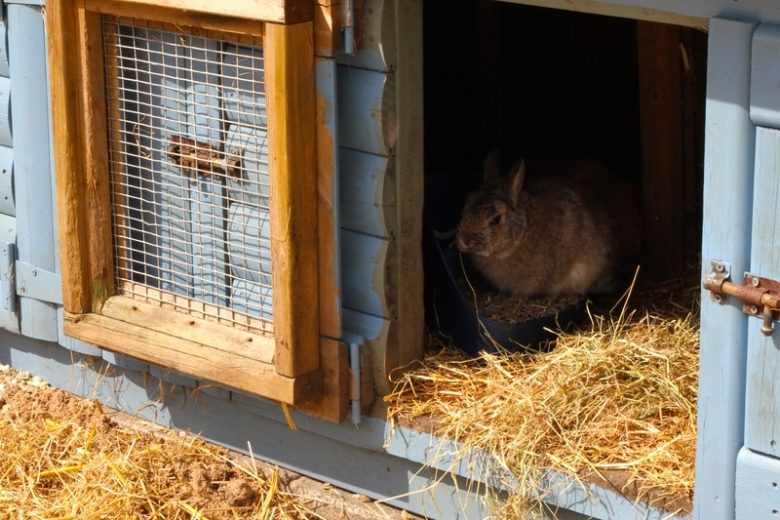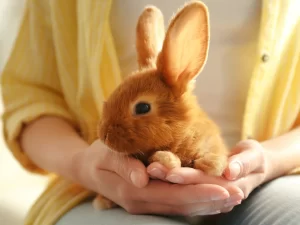Choosing the right home is important if you want to give your rabbit a safe and comfortable stay. The perfect rabbit home should not only meet their basic needs but also improve their health and happiness. This guide covers the most important things to consider when choosing the best rabbit hutch for your pet.
1. Size Matters
The size of your rabbit’s home is one of the most important things to consider. Rabbits need plenty of space to jump, stretch out, and look around as they are very busy animals. A large surface area is good for their health and prevents them from performing poorly when they are bored or stressed. Choose a hut or box that allows your rabbit to jump at least four times in each direction.
2. Inside or Outside?
The type of housing you choose depends on whether your rabbit is an indoor or outdoor pet. A large cage with a safe play area is usually best for rabbits to live in. For rabbits that live outside, they need a shed that protects them from the weather. Make sure that the outdoor structure you provide your rabbit is well-insulated and protected from extreme temperatures.
3. Construction Materials and Methods
Choose buildings made of safe and sustainable materials. People like to use wooden kitchen utensils outdoors because it retains heat and has a natural look. Wire-bottom cages used indoors are easy to clean but can be painful for your rabbit’s tender feet. To ensure your pet is comfortable, you may want to add a hard surface or soft bedding.
4. Easy Access
Your rabbit should have easy access to food, water, and a litter box. Choose a home with easily accessible space to store these important items. To prevent your rabbit from becoming bored, you can give him toys and other things to think about.
5. Airflow
To keep your rabbit’s living space healthy, make sure there is adequate air circulation. Make sure the enclosure has adequate air circulation to prevent odor build-up and reduce the risk of respiratory problems.
6. Maintenance
To keep your rabbit’s living space clean, you need to clean and repair things regularly. Choose a case with an easy-to-clean surface or a removable drawer. You both benefit from it: it makes cleaning your rabbit easier and better.
7. Fun and Educational Activities
Add enrichment tasks to your rabbit’s living space to keep his mind active and prevent him from becoming bored. To support natural behaviors like digging and chewing, you may want to add tunnels, toys, and things to chew. This changes their lives for the better and encourages them to live healthy, busy lives.
8. Think Safely
Rabbits are naturally curious and should not be exposed to any danger at home. Remove any poisonous plants or substances from the environment and ensure that the cage cannot be opened. Check regularly for loose wires or sharp edges that could harm your pet.
9. Opportunity to Meet New People
Rabbits are very social animals and enjoy being around other rabbits. If you can, you might want to buy some rabbits to play with. Make sure the house is large enough to easily accommodate more than one rabbit. Having friends and family around them can improve their mental health and make them feel less alone.
10. Meet the Vet
Before deciding where to keep your rabbit, first contact a veterinarian who specializes in treating pets with unusual conditions. They can give you useful information about what your rabbit needs, help you find the best place to house your rabbit, and ensure that your pet’s health comes first.
Conclusion
When choosing the best home for your rabbit, you shouldn’t just consider his basic needs. You also need to consider their mental and emotional health. By providing your canine friend with a spacious, safe, and fun space to live in, you create a happy and healthy life for him or her. Remember that a rabbit’s home is more than just a safe place. This is also where they grow and flourish as a beloved part of the family.
FAQs
1. What size cage should I choose for my rabbit?
For maximum comfort and health, your rabbit should be able to hop at least four times from your home in any direction. The larger the space, the better, as it encourages movement and prevents people from underperforming due to stress.
2. Can I keep rabbits indoors?
Certainly! Rats and rabbits can live in a large cage that leads to a safe play area. Make the interior space safe, free of open lines or hazardous materials, and prevent people from getting bored by giving them food for thought.
3. What material is best for a rabbit hutch?
People like to use wooden kitchen utensils outdoors because it retains heat and has a natural look. If you keep your rabbit indoors, look for a cage with a sturdy floor or soft bedding to protect its soft paws. Choose something safe, durable, and easy to clean.
4. How do I ensure sufficient air circulation in my rabbit’s home?
Choose a well-ventilated home to prevent odor formation and reduce the risk of respiratory problems. Make sure there are holes or mesh areas so that air can flow properly.
5. Should I give my rabbit toys?
Yes, it is important to keep your rabbit’s mind active. Add tunnels, toys and chew items to their living space to help them do natural things like digging and chewing. This encourages people to live healthy and busy lives.
6. Is there anything I should know about rabbit safety?
Certainly. Remove any poisonous plants or substances from the environment and ensure that the cage cannot be opened. Check regularly for loose wires or sharp edges that could harm your rabbit.


